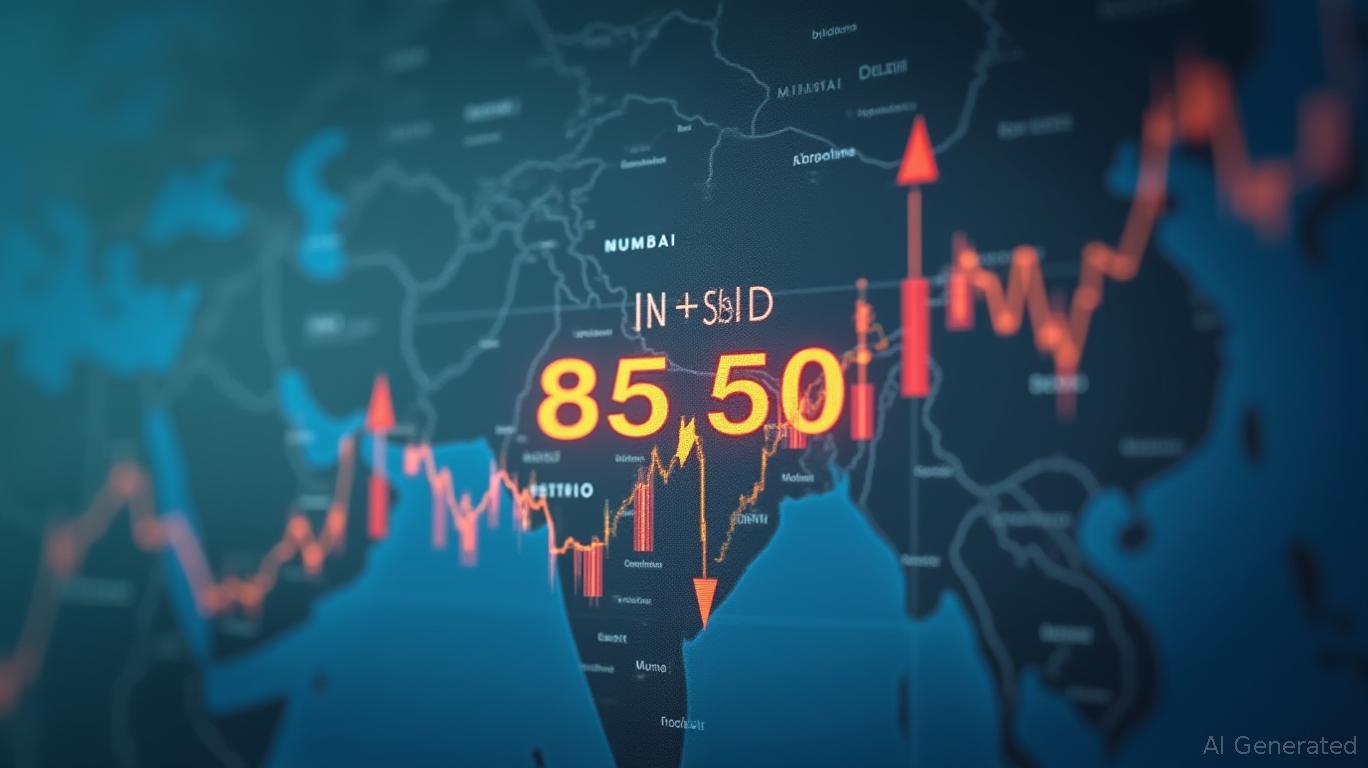India's Forex Reserves Decline: Navigating Volatility in a Globalized Economy
The Reserve Bank of India (RBI) reported a decline of $2.065 billion in India’s foreign exchange (forex) reserves for the week ending May 2, 2025, marking the end of an eight-week streak of gains. The reserves now stand at $686.064 billion, down from a near-six-month high of $688.129 billion the prior week. While this dip may seem modest in absolute terms, it underscores deeper economic dynamics, including RBI interventions, capital outflows, and global currency fluctuations. Below, we analyze the drivers of this decline and its implications for investors.
Ask Aime: Why did India's forex reserves drop by $2.065 billion?

Key Drivers of the Reserve Decline
1. RBI Market Interventions
The RBI’s efforts to stabilize the Indian rupee (INR) against external volatility are a primary factor. To counter the INR’s depreciation pressure, the RBI likely sold U.S. dollars from its forex reserves. While foreign currency assets (FCAs)—the largest reserve component—rose by $514 million to $581.177 billion, this was offset by declines in other components:
- Gold Reserves: Fell by $2.545 million to $81.82 billion.
- Special Drawing Rights (SDRs): Dropped by $30 million to $18.558 billion.
- IMF Reserve Tranche Position: Declined by $3 million to $4.509 billion.
Ask Aime: How is RBI's intervention impacting India's forex reserves?
The RBI has consistently stated its interventions aim to maintain orderly market conditions rather than target specific exchange rates. However, sustained dollar sales to prop up the INR will continue to pressure reserves.
2. Capital Outflows and Investor Sentiment
Foreign investors withdrew nearly $9 billion from India’s debt and equity markets year-to-date, exacerbating reserve pressures. Global headwinds—such as rising U.S. interest rates and geopolitical risks—have made emerging markets like India less attractive to capital. For instance, during January 2025, reserves fell $79 billion from their September 2024 peak, partly due to capital flight.
3. Valuation Effects of Non-USD Currencies
Forex reserves are denominated in U.S. dollars, but FCAs include holdings in euros, yen, and pounds. When these currencies weaken against the dollar, their value declines even without active RBI intervention. In December 2024, non-USD currency devaluations shaved $6.014 billion off FCAs. Similar valuation impacts likely contributed to May 2025’s decline.
4. Rising Import Costs
India’s reliance on imported crude oil—accounting for ~25% of its import bill—means higher global oil prices directly strain forex reserves. While the May 2025 data does not explicitly cite this factor, prior declines (e.g., in 2024) were linked to rising crude prices.
Global Context and Challenges
- U.S. Federal Reserve Policies: The Fed’s rate hikes in 2025 have intensified capital outflows from emerging markets, as investors seek higher yields in the U.S.
- Geopolitical Risks: Tensions in the Middle East and South Asia, alongside trade disputes, have amplified market volatility.
- Commodity Prices: A surge in oil prices could further pressure India’s import payments, eroding reserves.
RBI’s Balancing Act
The RBI faces a dual challenge: stabilizing the rupee while preserving adequate reserves. Tools include:
- Market Interventions: Selling dollars to support the INR but risking reserve depletion.
- Policy Adjustments: Raising interest rates to attract foreign capital or curb inflation.
- Portfolio Diversification: Rebalancing reserves to mitigate currency risks.
Conclusion: Reserves Remain Adequate, but Risks Linger
Despite the $2 billion dip in May 2025, India’s forex reserves remain near their 2025 highs and comfortably cover 10–12 months of import payments—a key stability benchmark. However, the decline highlights vulnerabilities:
- External Shocks: A sustained rise in oil prices or further Fed rate hikes could intensify outflows.
- Reserve Composition: While FCAs increased, smaller components like gold and SDRs are volatile.
The RBI’s proactive management has so far averted a crisis, but investors should monitor INR/USD exchange rate trends and foreign investor flows closely.
In summary, India’s forex reserves remain a pillar of macroeconomic stability, but their trajectory in 2025 will hinge on global conditions and the RBI’s ability to navigate a complex landscape of capital flows, currency valuations, and geopolitical risks.
Data as of May 2025. Analysis reflects available information up to this date.


_442a2dcc1749832873286.jpeg)
_e68fac6d1749831664430.jpeg)






